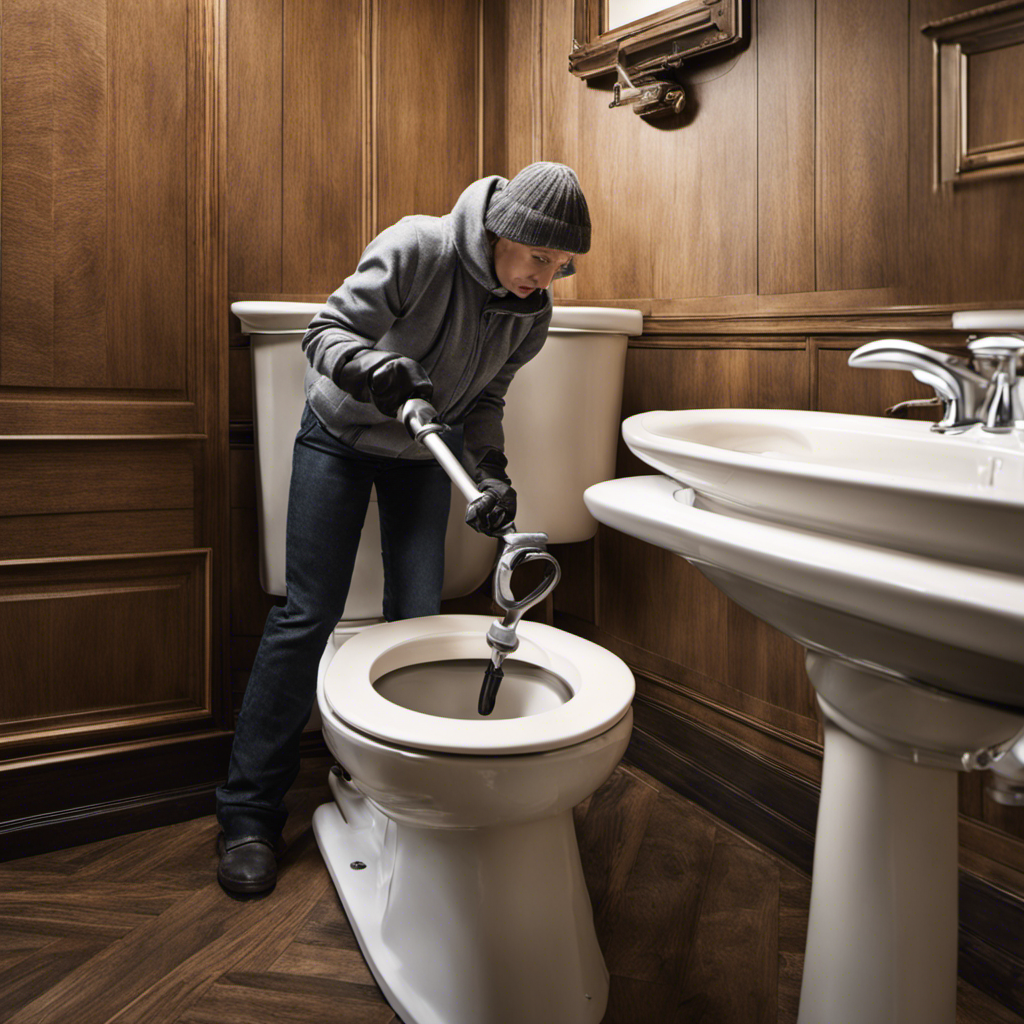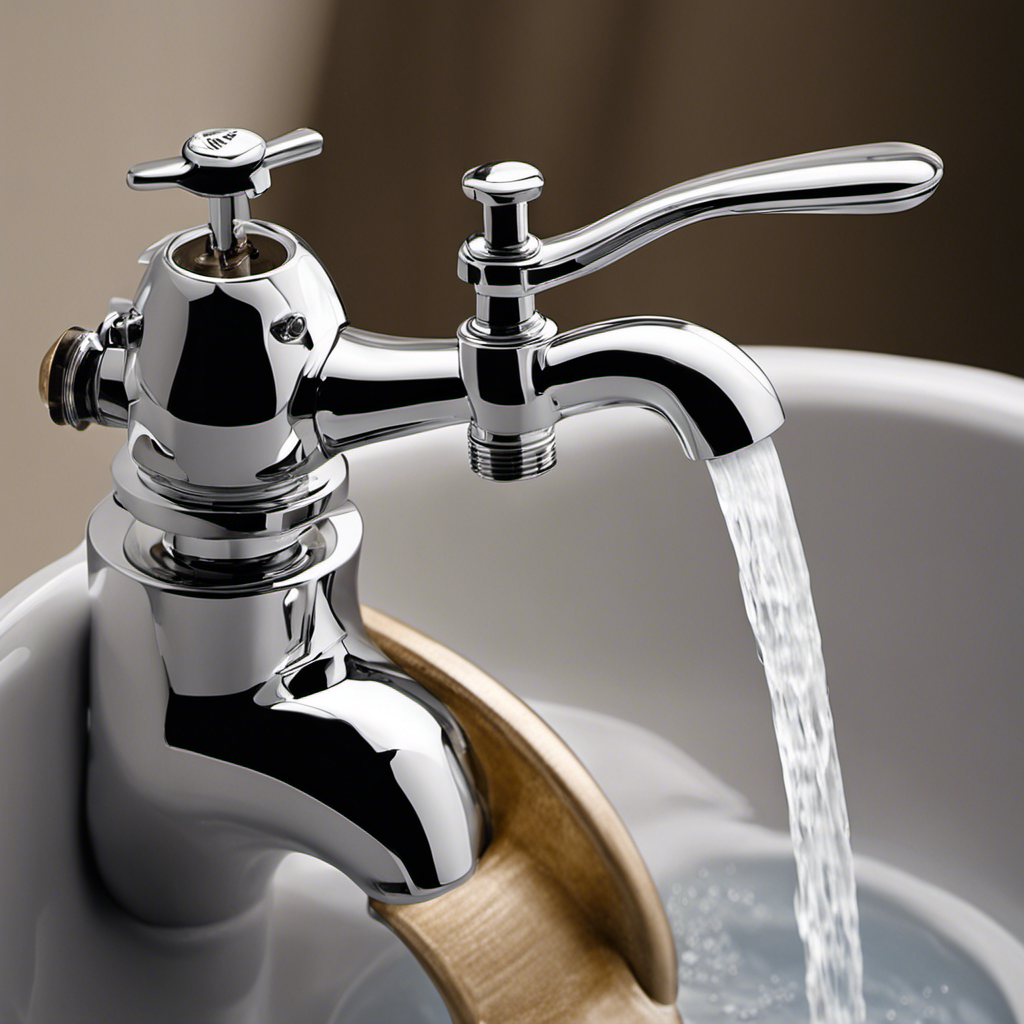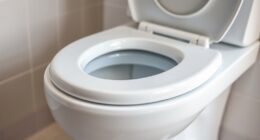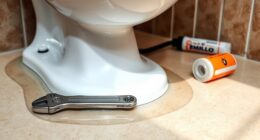Welcome to our tutorial on the different parts that constitute a toilet flush system.
Picture this: you’re in the bathroom, ready to give the handle a satisfying push and watch as the magic happens.
But have you ever wondered what goes on behind the scenes? Well, we’re here to shed some light on the inner workings of this essential plumbing fixture.
From the handle and trip lever to the flapper, fill valve, and more, we’ll explore each part and its role in creating a flawless flush.

Get ready to achieve toilet mastery!
Key Takeaways
- The handle and trip lever are essential components that connect to the flapper or flush valve and allow for flushing.
- The flapper is a rubber or plastic valve that regulates the flow of water into the bowl and prevents water from escaping.
- The fill valve is responsible for refilling the toilet tank with water and maintaining the proper water level for a successful flush.
- The overflow tube is a vertical tube connected to the toilet tank that regulates water level and prevents flooding by releasing excess water into the bowl.
Handle and Trip Lever
The handle and trip lever are essential components of a toilet flush system, allowing us to activate the flushing mechanism with ease and efficiency. The toilet flush mechanism consists of a chain or rod that connects the handle to the flapper or flush valve. When we press down on the handle, it pulls the chain or rod, which lifts the flapper or opens the flush valve, releasing water into the bowl.
Common toilet handle problems include a loose handle, a handle that sticks or doesn’t return to its original position, or a handle that doesn’t flush the toilet properly. These problems can often be fixed by adjusting or replacing the handle, or by replacing the chain or rod.
Regular maintenance and inspection of the handle and trip lever can help prevent these problems and ensure a properly functioning toilet flush system.

Flapper
Our toilet’s flush system includes a flapper that is responsible for regulating the flow of water into the bowl. The flapper is a rubber or plastic valve that covers the hole at the bottom of the toilet tank. When the handle is pressed, the flapper lifts up, allowing water to rush into the bowl and initiate the flushing process. Once the tank is emptied, the flapper closes the hole tightly, preventing any further water from escaping.
To ensure the proper functioning of the flapper, regular maintenance is essential. Over time, the flapper can deteriorate or become misaligned, leading to leaks or inefficient flushing. If you notice any issues, such as the toilet continuously running or not flushing properly, it may be time for a flapper replacement. Replacing the flapper is a straightforward process and can be done by following the manufacturer’s instructions or seeking professional assistance. By taking care of flapper maintenance, you can ensure a smooth and efficient flushing experience.
| Flapper Replacement | Flapper Maintenance |
|---|---|
| Inspect for wear and tear | Clean the flapper regularly |
| Purchase a compatible replacement | Check for proper alignment |
| Follow manufacturer’s instructions | Adjust the chain length if needed |
Fill Valve
The fill valve is a crucial component of a toilet flush system. It’s responsible for refilling the toilet tank with water after each flush.
In this section, we’ll discuss the importance of the fill valve and provide troubleshooting tips for common issues that may arise with it.
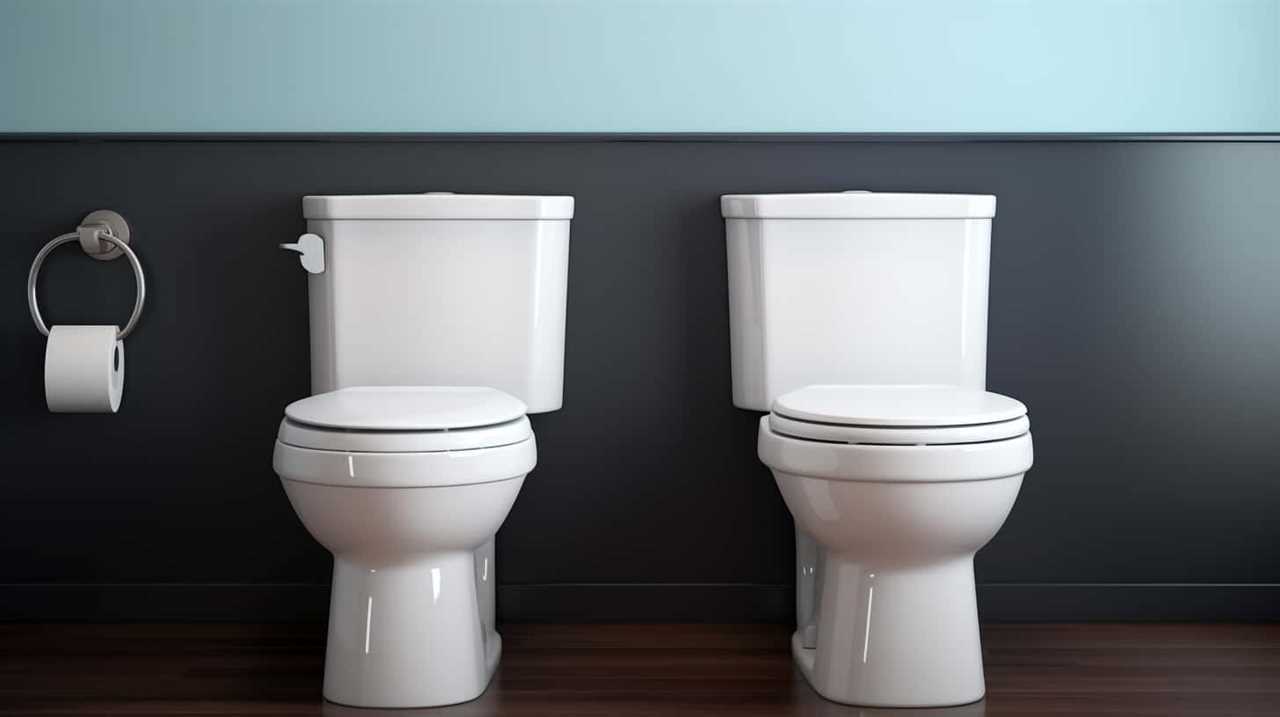
Importance of Fill Valve
We rely on the fill valve to ensure efficient and effective water replenishment in our toilet flushes. The fill valve plays a crucial role in maintaining the proper water level in the toilet tank, which is essential for a successful flush.
Here are some key reasons why the fill valve is important:
- Water Conservation: A well-functioning fill valve ensures that only the necessary amount of water is used for each flush, helping to conserve water.
- Prevent Water Overflows: The fill valve controls the water level in the tank, preventing it from overflowing and causing potential water damage.
- Maintenance: Regular fill valve maintenance, such as cleaning or replacing faulty components, can help prevent issues like leaks or inconsistent flushing.
- Replacement: If the fill valve becomes damaged or fails to function properly, timely replacement is necessary to maintain the efficiency of the toilet flush.
Understanding the importance of the fill valve sets the stage for troubleshooting common issues that may arise.
Troubleshooting Fill Valve
To effectively troubleshoot the fill valve, we need to understand its functionality and potential issues. The fill valve is responsible for refilling the toilet tank after each flush, ensuring proper water levels for future use. However, like any mechanical component, it can encounter problems that may affect its performance.

Common fill valve problems include a noisy fill valve, slow tank refill, or a constantly running toilet. If you’re experiencing any of these issues, there are a few troubleshooting steps you can take.
First, check for any visible signs of damage or wear on the fill valve. If everything looks fine, try cleaning the valve and its components to remove any debris or mineral deposits that may be causing the problem.
If the issue persists, it may be time to consider replacing the fill valve. Troubleshooting fill valve problems is an essential part of fill valve maintenance, which ensures the proper functioning of your toilet.
Now, let’s move on to the next section about the overflow tube.

Overflow Tube
One essential part of a toilet flush is an overflow tube. The overflow tube is a vertical tube connected to the toilet tank that prevents the water level from rising too high. It serves two important functions: regulating the toilet water level and relieving excess water pressure.
The overflow tube ensures that the water level in the tank doesn’t exceed a certain point, preventing potential flooding and damage. It acts as a safety valve, releasing excess water into the bowl if the fill valve malfunctions or water pressure becomes too high.
The length of the overflow tube is crucial in determining the maximum water level in the tank. The position of the overflow tube is designed to direct the overflow water into the bowl rather than onto the floor.
Flush Valve
Moving on to the next essential part of a toilet flush, let’s now discuss the mechanism known as the flush valve. The flush valve is responsible for releasing water from the tank into the bowl when you flush the toilet. It consists of a rubber or silicone flapper that lifts up when the handle is pressed, allowing water to flow through.

Proper flush valve installation is crucial for the efficient operation of the toilet. Make sure the flapper is securely attached to the flush valve seat and there are no leaks. It’s also important to regularly inspect and maintain the flush valve to prevent any issues. This includes checking for any signs of wear or damage to the flapper, cleaning any mineral deposits or debris that may accumulate, and replacing the flapper if necessary.
Here is a table summarizing the key steps for flush valve installation and maintenance:
| Flush Valve Installation | Flush Valve Maintenance |
|---|---|
| Securely attach flapper to flush valve seat | Regularly inspect for wear or damage |
| Check for leaks | Clean mineral deposits and debris |
| Test flush valve operation | Replace flapper if necessary |
Tank
Now let’s shift our attention to the tank, which plays a crucial role in the functioning of a toilet flush. The tank is where the water is stored and released during a flush. Here are some important aspects to know about the toilet tank:
- Toilet Tank Cleaning: Regular cleaning of the tank is essential to prevent the buildup of bacteria and mineral deposits. Use a mild cleaner and a brush to scrub the inside of the tank, focusing on the walls and bottom.
- Toilet Tank Water Level Adjustment: The water level in the tank should be set properly to ensure optimal flushing. Adjust the water level by either lowering or raising the float arm or adjusting the fill valve.
- Fill Valve: This valve controls the water flow into the tank and allows the tank to refill after a flush. It’s important to ensure that the fill valve is functioning correctly to maintain the proper water level.
- Overflow Tube: The overflow tube prevents the tank from overflowing. It directs excess water into the bowl if the water level gets too high.
With an understanding of the tank, let’s now move on to discussing the bowl and its components.

Bowl
Let’s dive into the bowl, the integral component of a toilet flush. The bowl is where all the action happens, as it’s responsible for collecting and disposing of waste. It’s designed with a specific shape to ensure efficient flushing and prevent clogs.
The most common bowl shape is the elongated bowl, which offers more comfort and space compared to the round bowl.
When it comes to bowl cleaning, it’s essential to use the right tools and products to maintain hygiene. Regular cleaning with a toilet brush and a mild cleaner can help remove stains and prevent the buildup of bacteria. Remember to clean both the inside and outside of the bowl for a thorough cleaning.
Conclusion
In conclusion, understanding the various parts of a toilet flush is essential for maintaining its proper functioning.

From the handle and trip lever that initiates the flush to the flapper and fill valve that control the water flow, each component plays a crucial role.
The overflow tube prevents water from flooding, while the flush valve and tank work together to deliver a powerful flush.
Finally, the bowl ensures a clean and efficient disposal of waste.
By grasping these components, you can ensure a smooth and trouble-free flushing experience.




